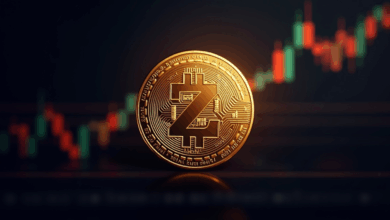Tokenized Alternative Funds Jump 47% to $1.7B in 30 Days
The tokenization wave isn’t just approaching — it has already begun transforming global markets at a rapid pace. Investors clinging to legacy frameworks may soon find themselves left behind as blockchain-based financial ecosystems accelerate. One of the most significant recent developments in this space is the staggering 47% growth in tokenized alternative funds over just 30 days, propelling the sector’s total value to an impressive $1.7 billion. This surge is more than a statistic — it’s a reflection of how blockchain is disrupting the very fabric of traditional asset management.
Alternative investments — typically including private equity, private credit, real estate, infrastructure, and hedge fund strategies — have long been the domain of institutions due to high investment minimums, limited liquidity, and complex legal structures. But through tokenization, these barriers are beginning to crumble. Blockchain allows these traditionally illiquid assets to be represented as tokens on a distributed ledger, easily bought, sold, and transferred 24/7, drastically improving their liquidity and accessibility.
According to emerging data, a growing number of institutional-grade assets are now being tokenized and made accessible on public blockchains. This massive uptick in adoption is being fueled by several macroeconomic and technological trends. Rising interest rates, persistent inflation, and growing skepticism of traditional financial systems are pushing investors to seek assets that deliver yield and protect capital. At the same time, blockchain infrastructure — particularly Ethereum — offers a powerful toolkit for creating more transparent, efficient, and secure investment platforms.
Ethereum is undeniably leading this tokenization revolution. With over $1 billion of institutional assets now tokenized on its network, Ethereum remains the top ecosystem supporting smart contract deployment and real-world asset digitization. Its robust developer community, security track record, and composability with decentralized finance (DeFi) protocols make it the clear frontrunner. Ethereum’s dominance also extends to the design and execution of sophisticated investment vehicles such as tokenized income funds, real estate investment trusts (REITs), and private debt instruments — all of which are now programmable and tradable on-chain.
This trend represents more than just a technological evolution; it’s a paradigm shift. Tokenized funds powered by Ethereum leverage smart contracts — self-executing programs built directly into the blockchain — to automate complex processes like dividend distributions, compliance checks, investor onboarding, and real-time reporting. This reduces operational costs, eliminates intermediaries, and boosts transparency. As a result, both asset managers and investors are finding new levels of efficiency and trust in their financial relationships.
Market infrastructure and regulatory frameworks are simultaneously maturing, laying the groundwork for broader adoption. For instance, some jurisdictions are beginning to recognize tokenized securities and digital assets under law, paving the way for greater clarity and compliance. Meanwhile, traditional financial institutions such as Franklin Templeton, JPMorgan, and BlackRock are experimenting with — or outright embracing — tokenization strategies. They see the potential to reach new investor classes, generate operational savings, and offer innovative products that weren’t viable in the legacy financial system.
One key feature that’s drawing attention to tokenized alternatives is fractional ownership. Tokenization allows investors to hold a fraction of an asset — for example, a piece of a high-yield real estate portfolio or private lending fund — breaking down what was once a high-barrier market into more affordable digital shares. This enables retail and institutional investors alike to construct diversified portfolios previously only accessible to ultra-high-net-worth individuals or large funds.
Liquidity is another game-changer. In traditional alternatives markets, secondary sales of limited partnership interests can take weeks or months to close due to lengthy paperwork and legal entanglements. With tokenized assets, peer-to-peer transfers can occur almost instantaneously using blockchain infrastructure. Decentralized exchange (DEX) platforms and secondary trading venues are being built to accommodate these assets, creating 24/7, global markets for everything from tokenized debt to carbon credits.
And then there’s composability — the idea that tokens are built on interoperable standards. On Ethereum, this means investors can use tokenized alternatives within DeFi ecosystems as collateral, earn yield via liquidity pools, or automate strategies using decentralized asset managers. The entire financial stack becomes modular, interoperable, and borderless.
For contrarian investors — those who prefer to take a differentiated stance from the mainstream — the rise of tokenized funds presents a compelling opportunity. While many retail participants are still distracted by high-volatility assets like memecoins and NFTs, real-world asset tokenization is gaining ground with the smart money. A capitalization of $1.7 billion may sound like a lot, but when measured against the multi-trillion-dollar global alternatives market, it becomes clear that tokenized finance is just getting started. With mainstream adoption still in its infancy, the early movers stand to gain the most.
Unlike speculative cryptocurrencies, tokenized alternatives are grounded in cash-generating real-world assets. Investors weary of past cycles of boom-and-bust within the digital asset space now have a more conservative, fundamentally driven on-ramp into blockchain-based finance. For instance, tokenized private credit funds pay regular interest derived from business loans, while tokenized REITs distribute rental income and appreciation, just like their traditional counterparts — only with enhanced transparency and efficiency.
Tokenized funds also offer a strategic hedge. By holding real-world-backed digital assets, investors can diversify away from purely digital volatility and reallocate into instruments with defensible value. For instance, rather than holding highly volatile native tokens, an investor might choose tokenized infrastructure projects, short-duration debt, mezzanine financing instruments, or even ESG-related assets. These provide exposure to alternative return streams, fewer correlated risks, and a foundation based on cash flows, not code speculation.
At the infrastructure level, significant strides are being made by purpose-built platforms facilitating the issuance and management of tokenized securities. Through partnerships with banks, fintechs, and custodians, these platforms are accelerating access and enhancing trust. Institutions now have the option to custody digital assets via regulated, insured providers — bridging the gap between blockchain’s innovation and Wall Street’s safety nets. This hybrid model blends the best of both worlds and is quickly becoming the norm.
The implications go even further. With programmable automation enabled by Ethereum smart contracts, fund structures can be set up that dynamically rebalance, execute trigger-based investment actions, or support automated governance. These new functionalities allow for the possibility of entirely autonomous investment vehicles — decentralized funds that are transparent, efficient, and unbound by geographic or administrative limitations.
Yet perhaps the greatest benefit is access democratization. In emerging markets, where investors have historically lacked entry points to reliable wealth-building vehicles, the combination of tokenized finance and mobile-native platforms means that global capital markets are now within reach. Whether it’s a farmer in Kenya allocating into a tokenized infrastructure bond or a student in Brazil holding tokenized REITs, finance is becoming more inclusive thanks to blockchain.
In conclusion, the performance of tokenized alternative funds is not an isolated anomaly; it signals the beginning of a broader transition from paper-based financial products to blockchain-enabled digital assets. Ethereum, as the dominant smart contract platform, is catalyzing this transformation and positioning itself as essential financial infrastructure in a tokenized world. As the sector expands, and traditional allocators pivot toward this new frontier, the investors who act early will be best positioned to benefit.
History doesn’t reward hesitation. It rewards innovation — and those who move ahead of the curve.
Source link




